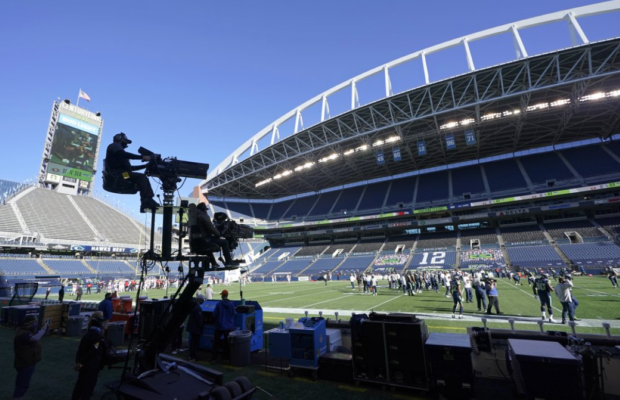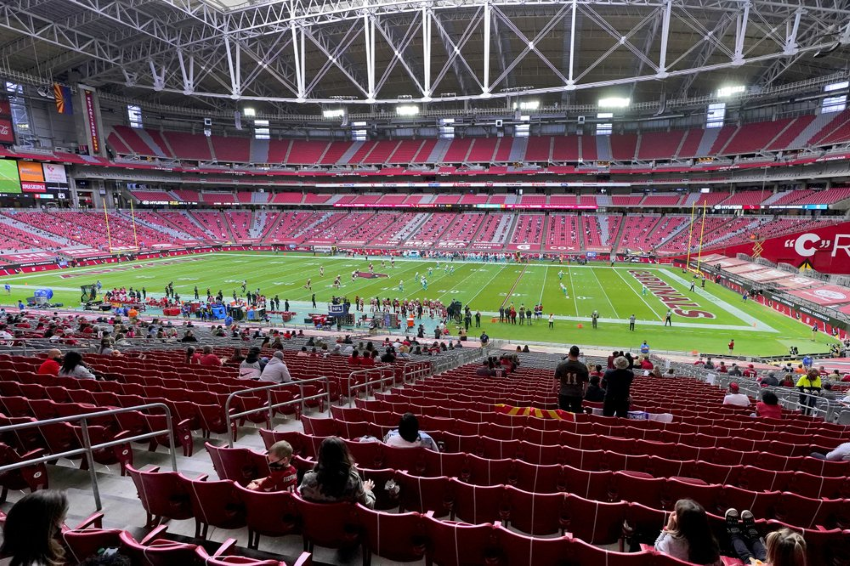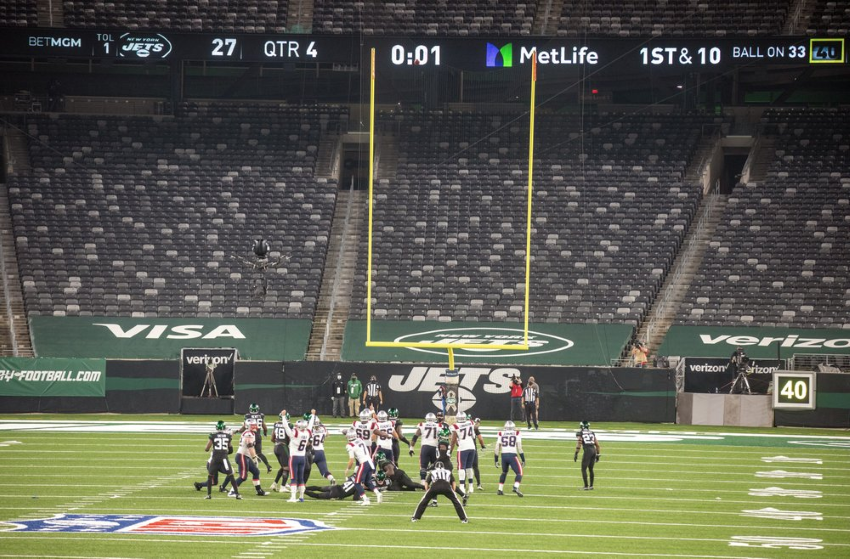With limited fans, NFL home teams on pace for losing record

By Schuyler Dixon
Philip Rivers could hardly believe the sound of silence when his Indianapolis Colts played in Detroit the first time the Lions let 250 family members and friends attend.
It’s probably no surprise to the 38-year-old quarterback that the NFL is on track for home teams to have a losing overall record for the first time since before the 1970 merger.
With roughly two-thirds of teams allowing limited fans and the rest none at all because of the pandemic, hosts went 65-67-1 through nine weeks. The last time visitors had a winning record this late in the season was 1983, when home teams rallied and finished with 15 more victories.
“I can’t tell you how dead it was,” Rivers said after the Colts’ 41-21 victory over the Lions on Nov. 1. “It was unbelievable.”
The Colts aren’t exactly packing them in at home, though. Indianapolis is among 11 teams allowing fewer than 10,000 fans per game. The Dallas Cowboys have hosted the NFL’s largest crowds but aren’t anywhere close to the maximum allowable capacity of 50% in Texas.
Quarterbacks can hear themselves think — even in the game’s biggest moments — and offenses don’t have to worry about the constant disruptions to their operations normally associated with hostile environments.
If road teams end up with a winning record for the first time since 1968 and just the second time since the early 1950s, the pandemic-limited crowds figure to be the factor players and coaches point to the most.

Miami Dolphins and Arizona Cardinals compete during the first half of an NFL football game, Sunday, Nov. 8, 2020, in Glendale, Ariz. Photo: AP Photo/Ross D. Franklin
“The home-field advantage really isn’t what it used to be when you don’t have 75-80,000 people screaming at you,” Washington coach Ron Rivera said. “So it does take on a whole different atmosphere. Whether that’s it or not, that seems to be one of the good reasons why.”
As expected, restrictions on fans are taking a huge chunk of revenue from teams. Marc Ganis, co-founder of Chicago-based consulting group Sportscorp and a confidant of many NFL owners, estimates each team will bring in $100 million less in revenues.
For teams such as the Cowboys with massive stadium-related revenues — more than $600 million in 2018, according to Forbes — the figure will be much higher. And Ganis says the higher-revenue teams will be the ones most affected by having limited crowds or no fans at all.
“It’s very significant,” Ganis said. “There’s no sugarcoating this. It can’t be helped. It could have been much more, but it’s still going to be a hit of nine figures per team for each team in the league.”
Among the 19 teams allowing fans, the Cowboys have the highest average and percentage at 25,750, about 32% of capacity at AT&T Stadium, which has 80,000 permanent seats. Dallas hosted a pandemic-high 31,700 last week against Pittsburgh.
The lowest percentage is in New Orleans, where Mayor LaToya Cantrell had to compromise with the Saints after the club threatened to move home games to LSU’s stadium in Baton Rouge.
The three-game average for the Saints is 1,499, or 2% of the Superdome’s capacity. Barring a reversal with coronavirus cases surging around the country, that number will keep going up. New Orleans had 3,000 for its most recent home game with plans for 6,000 each for the remaining November home games and 15,000 for each of two in December.
“We got some ‘Who Dat’ chants going,” quarterback Drew Brees said after 3,000 saw a 27-24 win over Carolina on Oct. 25. “It’s obviously great to have fans in the building. I would love it if we could have some more. Certainly, the defense would appreciate getting some crowd noise in there to get the place rocking like it should.”

New England Patriots kicker Nick Folk (6) starts celebrating his winning FG to defeat the New York Jets in an NFL football game Photo: Andrew Mills/NJ Advance Media via AP
Beyond the tiny group of friends and family, Detroit is among the 11 teams currently not allowing fans, with no announcement about the rest of the season. Both shared stadiums are in that group: Los Angeles with the Rams and Chargers and New Jersey with the New York Giants and Jets. But the expectation for both is the ban lasting all season. Minnesota and New England have already announced fans won’t be allowed all year.
Limited or no fans aren’t affecting the records of teams that traditionally have the best home-field edge. Pittsburgh is the NFL’s only unbeaten team, Seattle is undefeated at home and defending Super Bowl champion Kansas City has just one home loss, along with Green Bay and New Orleans.
But that might have something to do with those teams already being among the best in the league.
“I do understand with losing some of that crowd noise that does take away a huge part of the advantage of playing at home,” Cleveland coach Kevin Stefanski said. “For instance, we have not been on the silent count all year.”
Last year’s home record of 132-123-1 included the fewest victories by the hosts since the league expanded to 32 teams in 2002. So the argument could be made that the home/road trend was already in place before the pandemic.
But if the current pace holds, the NFL will have its fewest wins by home teams since 1987, when the league had 28 teams.
“It is a weird vibe to say the least,” Denver quarterback Drew Lock said. “You don’t have to go silent or worry about your ears ringing after a third down. It really is just any given Sunday when you go in there and play with no fans.”
___
Read original story in Associated Press